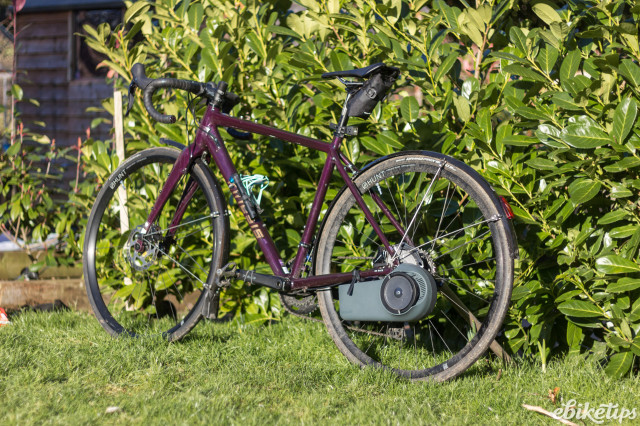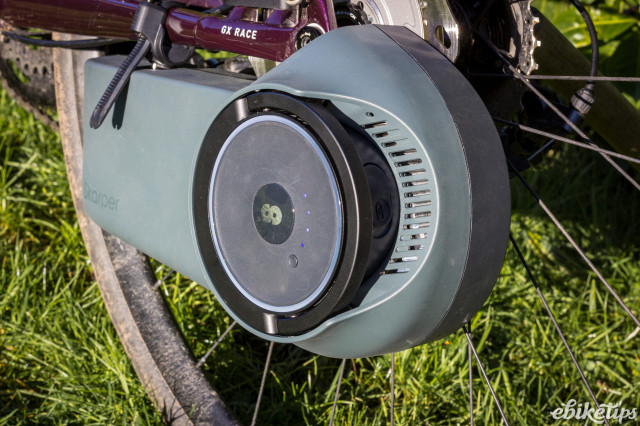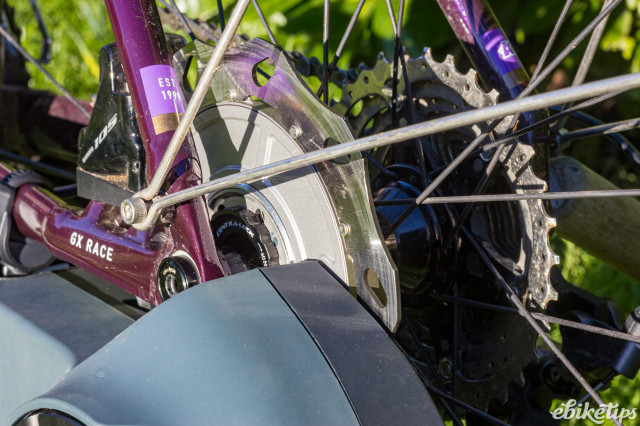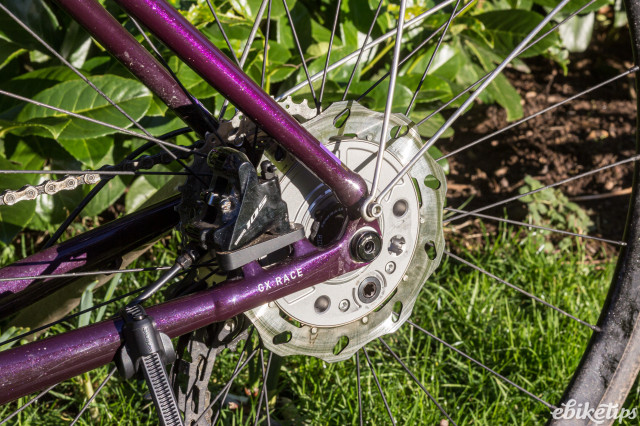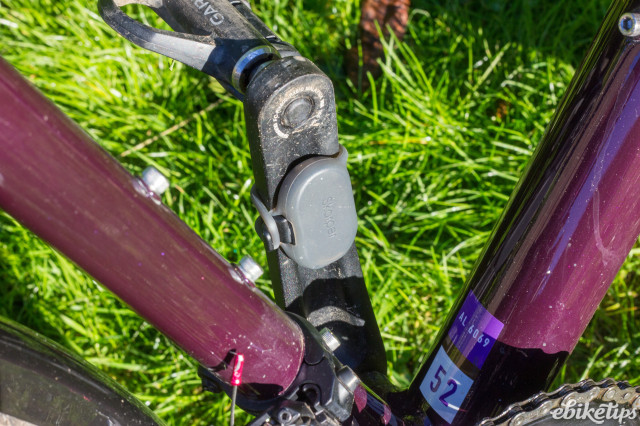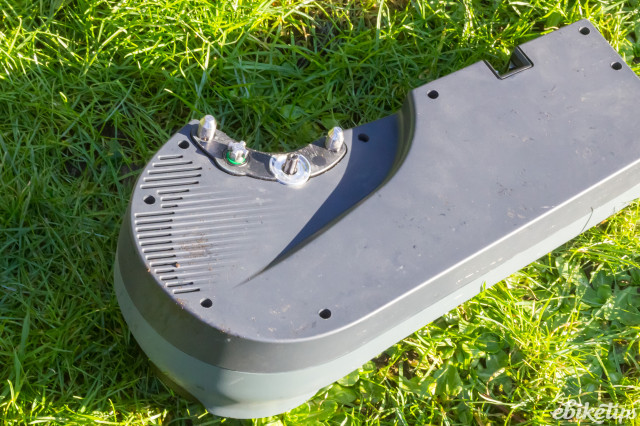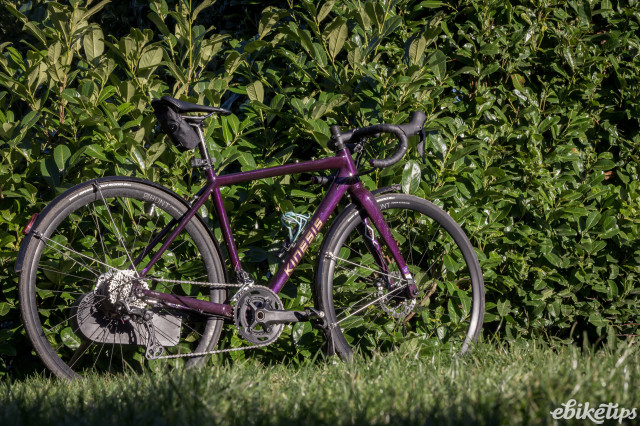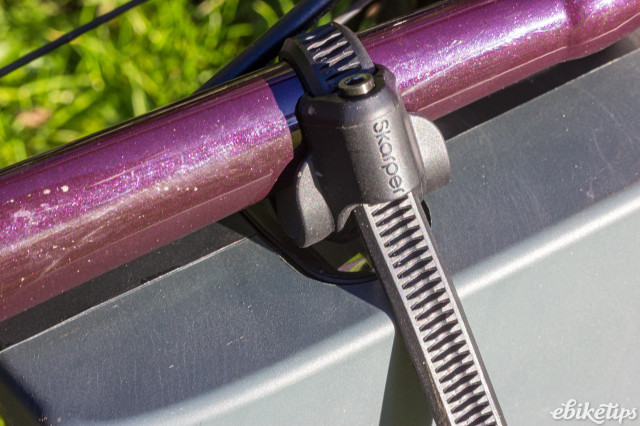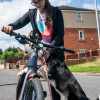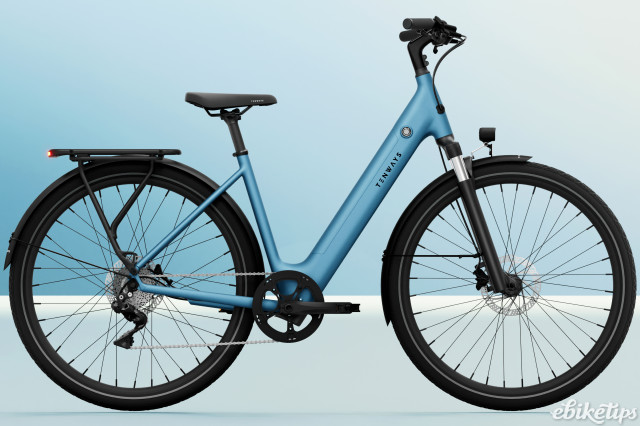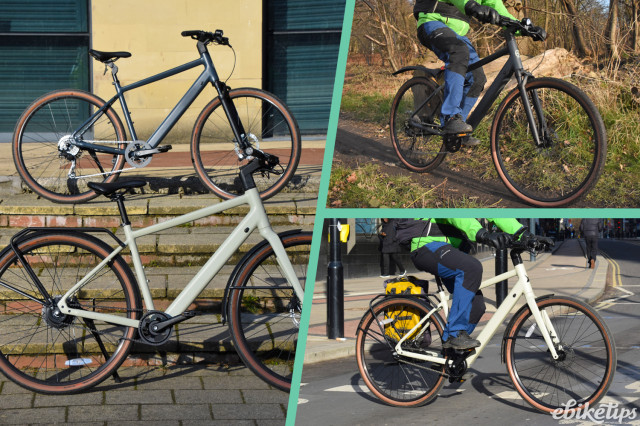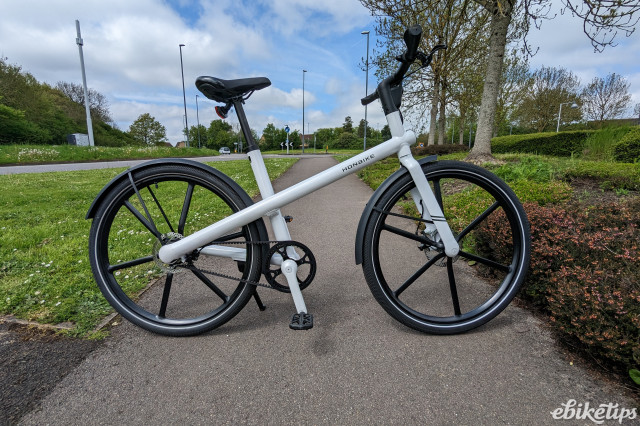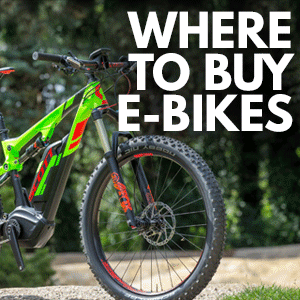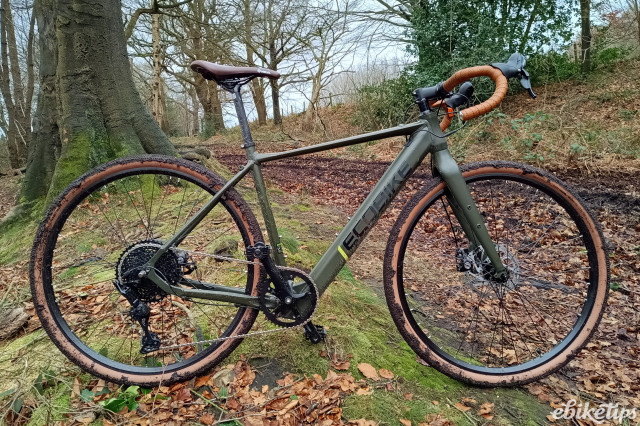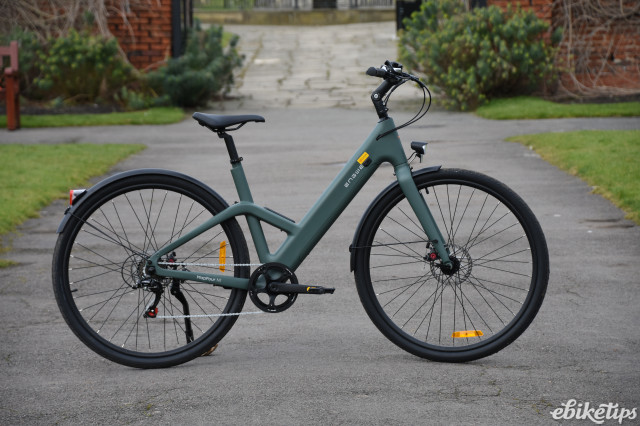The Skarper e-bike conversion kit has been a few years in the making, but has had Sir Chris Hoy in its corner as spokesperson and investor since fairly early on. And if a former Olympian track athlete is backing something cycling related, then it's surely going to be incredible, right?
Skarper is the brainchild of Ean Brown, Dr Alastair Darwood, and Uri Meirovich. I spoke to Meirovich, co-founder and COO of the company about its beginnings, the product itself, and what the plan is for 2025 and beyond.
I then fitted the Skarper to my beloved gravel/winter hack and took it for a spin.
What is Skarper?
"It took a very long time to get it right. But once you realise that as an e-bike, it rides, in my opinion, as good as, if not better than premium e-bikes, but when you remove it, it's your bike, it's a bit of a no brainer for anybody who likes cycling. And that's what I call it: an e-bike for people who like cycling."
Back in 2020, Darwood, a medical doctor and bike enthusiast, wanted to expand his stable with an electric bike. But he didn't want to compromise on weight or performance, which to him meant keeping his own road bike and going down the conversion route.
> Best e-bike conversion kits - motorise the bike you already have
As Meirovich explained: "He realised that there are two main motor technologies to make an e-bike today: a hub motor and a mid drive, and both of them, in his words, have an inherent flaw in that you need to design a complete bike around the motor - and that's not a regular bike.
"And conversion kits are more of the same. It's either a mid-drive or a hub motor, and to make it work, you have to change critical components on your bike."
So, rather than use a mid-drive or hub drive conversion, the brand went in a completely different direction and patented their own design, which they call DiskDrive.
"We realise that every frame is different, but there's one part [that] is uniform on all disc brake bikes, which is the disc brake," said Meirovich. "It's not only uniform in standard, but it's also engineered to withstand braking forces, so that's the strongest part of the bike. And that was the 'Aha!' moment."
This 'aha!' moment led to the development and eventual backing of Skarper by influential people like Sir Chris Hoy - who needs no introduction - and Andy Wallis, owner of Poshbikes.
The Skarper device clips onto the rear brake disc - not your own disc rotor, but the DiskDrive supplied by Skarper. From there, the motor and battery unit clips onto that and also a removable chainstay mount which allows a quick-release but secure means of attachment and removal.
The specs are pretty impressive too. It claims to top out at 45Nm of torque and offers up to 50km of range from the 240Wh battery on Eco mode. So while it's not going to be something you use for an all-day ride, for going to and from the office or the shops, it certainly has its place.
What's in the box?
In the box you get:
- The Skarper device
- DiskDrive replacement disc rotor
- Chainstay attachment
- Pedal sensor
- 6 bolt to centrelock adaptor
- Bolts for 6 bolt disc setups
Because there are a few different types of disc brake mounting systems (centrelock and 6 bolt for example), the tools to remove these aren't included - so make sure you have the correct tool before you put your bike in the stand.
You'll also need a 3mm Allen key for the chainstay attachment, and some scissors to cut the excess plastic when you've secured it in place.
Installation
Installing the Skarper was surprisingly easy. I mean, I don't know why I expected it to be so difficult - but what I'm saying is even an inept mechanic like myself can do it without damaging anything. So well done Skarper, it is quite literally idiot-proof.
I won't go through the installation in detail because I can't imagine it would be particularly exciting to read what would essentially be a manual. I will however say that once I acquired the correct tool (a Shimano Hollowtech II bottom bracket tool), it took me roughly 10 minutes to get everything fitted and torqued up.
Part of the plans for this year include developing a network of retailers and installers to help people fit the Skarper to their bikes so as to avoid the, "I'm sure I have this tool, oh, wait, no, I don't," debacle that I had.
In practice, this means you can order the conversion kit either directly from Skarper to be delivered to a workshop, or from a participating retailer.
"We will create a network of bike shops that we will onboard and train," said Meirovich. "They will be selling Skarper, and we are providing members of our network with a demo unit. We think it's important that they have a demo unit because people need to see it."
What I particularly like about the Skarper is that it's not an irreversible conversion. There's no filing of the fork dropouts or the like, it's simply a click on and off kit. This means I can use my bike as an analogue bike one day and then click Skarper on for a recovery ride, or when I really can't be bothered to pedal to the shops.
And according to Meirovich, that exact type of rider is part of their key market.
"We were certain that real cyclists and people that cycle for sport would not be a target market, because why would they want an e-bike? So we were going for the cool city commuter - but actually, it's both.
"We were surprised by the amount of cyclists that are considering an e-bike for a variety of reasons. A lot are over a certain age that they don't want to stop riding, but they don't want to become that e-bike person, and whatever happens, they will not replace their bike. So they love the idea of the Skarper.
"Then there are cyclists that plan to use it for the weekend cycle. But I believe, more and more, people are realising you can have your bike, the one that you like, become your e-bike."
The ride
To turn the Skarper on, you press the big S button on the device and then when the little blue light flashes, simply press the on button on the pedal sensor and wait until they sync. At this point, you can press the little button on the Skarper device to cycle through the three power modes: Eco, Cruise and Turbo.
I turned the Skarper on, set it to Eco as I planned a flat ride, and set off. The first thing I noticed was the weight on the bike. My bike isn't the lightest thing in the world at 9.2kg, but it's also noticeably heavier with the Skarper on it. I think the distribution of this weight it in the right place though - I felt far more comfortable having it lower down and towards the rear than nearer the front. Nonetheless, I could still feel it there and as I leant the bike over to get on, it did feel a little unnatural.
This feeling went away as soon as I began to pedal, however. Even in Eco the boost is instant and pretty good - ideal for cruising along when you're not too bothered about speed. Whacked up to Turbo mode, it felt more like a high-end hub motor.
I decided to do a roughly 13-mile loop to the local town and stop off at a bakery and grab some lunch. One thing I did find a little annoying was having to stop and get off the bike to change the riding modes.
Skarper has said that the company is working towards bringing out an app and this will greatly improve the user experience, I think, if you don't mind mounting your phone to your bars.
Carrying on with my journey and I was pleasantly surprised with how it functions. When you set the device up it needs to be calibrated on flat ground so that its clever little incline sensors can figure out when you're going uphill and need a little extra boost.
This little boost is impressive, and it worked quite well on the few railway bridges I encountered on what was otherwise a reasonably flat ride. From a performance aspect, it's hard to fault (on that short ride, at least). It's not particularly noisy, the power transfer is quick, and from an ease of use perspective, it's simple.
One thing I haven't mentioned thus far is the price. It retails for just under £1,500. Some may scoff at this, but the brand says the Skarper conversion kit is value for money.
"If you look at take a decent e bike that costs £2,500-£3,000, it will have a certain maximum power, certain weight, and it won't necessarily have great components on the bike.
"But, if you go to a shop and buy a £1,000 regular hybrid bike, it might have Shimano 105, maybe a carbon fork. Add in a £1,500 Skarper, and we would argue for the same amount of money, the bike with a Skarper will be lighter and have better components, on a like for like basis."
That's a bold claim from the brand, and whether or not you want to keep your bike so much that you'd spend £1,500 on a conversion kit will be an entirely personal choice. But, based on my short experience with the device so far, I'd say it's definitely worth considering if you are planning on going down the conversion kit route.
